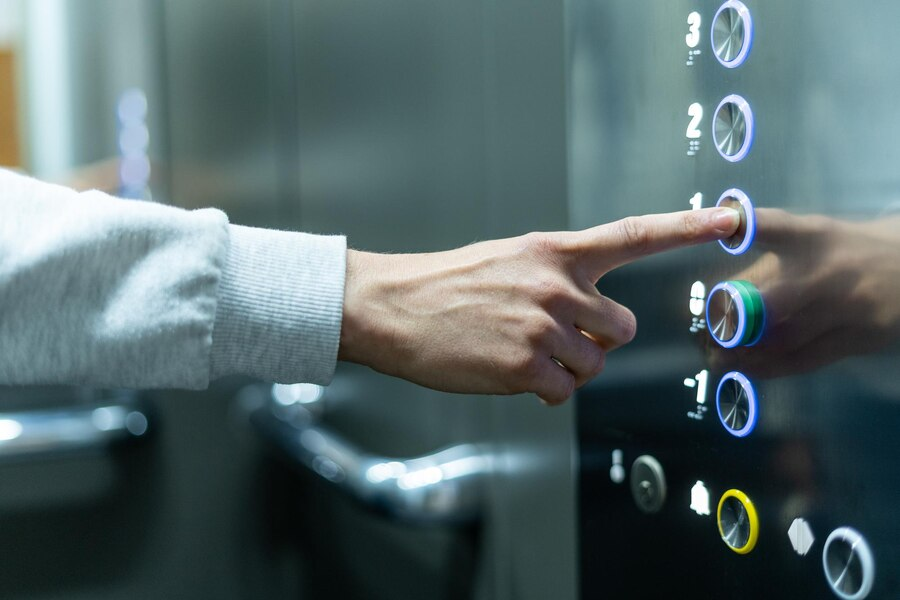Maintaining a lift system requires more than just routine checks; it demands an understanding of its key components, their lifecycle, and how to ensure their efficiency. In this comprehensive guide, we’ll explore everything you need to know about lift parts, focusing on identification, maintenance, purchasing, and disposal. Whether you’re a lift owner or technician, this post will help you make informed decisions that enhance both the safety and longevity of your lift system.
Key Lift Parts for Safe Operation
The operation of a lift hinges on several critical components, each playing a vital role in its safe function:
- Control Systems: These are the brains of your lift, responsible for directing the lift’s movement and safety mechanisms.
- Brakes: Essential for ensuring the lift stops precisely and safely at designated floors.
- Motors: These provide the power necessary to move the lift up and down.
- Door Systems: Regulate the opening and closing of the doors and include sensors to ensure passenger safety.
- Safety Gears: In the event of system failure, these gears prevent free fall or over-speeding.
- Cables and Pulleys: These transfer the mechanical energy needed for movement.
For an in-depth guide to lift parts identification, it’s crucial to know how these components work together to maintain safety. Identifying the lift component compatibility when purchasing or replacing parts is also essential to ensure smooth operation.
Differences Between Hydraulic and Traction Lift Parts
There are significant differences between the parts used in hydraulic lifts and traction lifts. Hydraulic lifts use oil pressure to move the lift, relying heavily on pistons, cylinders, and hydraulic fluid. In contrast, traction lifts use a counterweight system with ropes or belts to balance the lift’s weight and facilitate movement.
Understanding these distinctions is important when selecting or replacing parts. For example, lift parts for hydraulic elevators often include hydraulic pumps and tanks, while lift parts for traction elevators will focus more on the motor, counterweights, and sheaves.
Lift Maintenance Best Practices for Longevity
Routine maintenance is crucial for the longevity and safety of your lift system. Here are some best practices for lift maintenance:
- Inspection: Regularly inspect key components such as brakes, motors, and control systems. Use detailed inspection checklists to ensure nothing is overlooked.
- Lubrication: Ensure that moving parts like gears and pulleys are well-lubricated to reduce friction and prevent wear.
- Cleaning: Dust and debris can interfere with the operation of key parts. Keep components like the control system clean to prevent malfunctions.
- Replacement of Worn Parts: Monitor the lifespan of common lift parts such as cables and brakes, and replace them before they cause system failure.
These lift maintenance best practices are essential to extending the life of your lift and ensuring it operates smoothly.
Where to Buy Lift Parts Online?
Purchasing lift parts online can be convenient, but it’s important to ensure that the parts are of high quality. Here are some tips to ensure you’re getting the best parts:
- Research Trusted Sellers: Look for trusted online marketplaces for lift parts that have positive reviews and a good reputation.
- Check for Compatibility: Ensure the parts you’re purchasing are compatible with your specific lift model to avoid installation issues.
- Review Warranties: Purchase from suppliers who offer warranties on their products, ensuring you’re protected in case of defects.
Always cross-reference parts to guarantee quality and lift component compatibility.
Lifespan of Common Lift Parts
Different parts of a lift system have varying lifespans. For example:
- Cables and pulleys: Typically last around 5 to 7 years but should be inspected regularly for signs of wear.
- Brakes: Can last up to 10 years with proper maintenance but should be checked annually.
- Control systems and motors: May last longer but should be updated or replaced as technology advances to improve efficiency and safety.
Knowing when to replace parts based on their lifespan can prevent costly breakdowns and improve overall safety.
Sustainable Disposal of Lift Components
As lifts are updated or parts wear out, it’s essential to consider the environmental impact of disposal. Proper recycling of metals, plastics, and electronics can prevent harmful materials from ending up in landfills.
- Recycle Metal Components: Items like cables and steel parts can be recycled at most metal recycling centers.
- Electronic Waste: Circuit boards and control systems should be disposed of at facilities specializing in eco-friendly disposal of lift components.
- Hydraulic Fluids: Special care should be taken to dispose of old hydraulic fluids properly, as they can be harmful to the environment.
Implementing eco-friendly practices when disposing of lift parts not only helps the environment but also aligns with modern sustainability initiatives.
Frequently Asked Questions (FAQs)
- What are the essential lift parts required for safe operation?
- Control systems, brakes, motors, safety gears, and cables are crucial for safety.
- How often should lift parts be inspected and serviced?
- Most parts should be inspected every 6-12 months, with certain components like cables and brakes requiring more frequent checks.
- Can you buy lift parts online, and how do you ensure their quality?
- Yes, it’s important to buy from trusted sources and check for warranties and part compatibility.
- What steps should be taken for the sustainable disposal of old lift parts?
- Recycle metals, properly dispose of hydraulic fluids, and use certified facilities for electronic waste.
- How do lift parts vary between different types of lifts?
- Hydraulic lifts rely on fluid-based systems, while traction lifts use ropes and counterweights.
Conclusion
Understanding the various parts that make up a lift system is essential for maintaining its safety, reliability, and longevity. Regular maintenance, informed purchasing decisions, and eco-friendly disposal practices can help you keep your lift in top condition. Whether you’re a lift owner or technician, knowing the ins and outs of lift parts ensures that your system operates smoothly and efficiently for years to come.
Keep an eye for more news & updates on InternalInSider!










